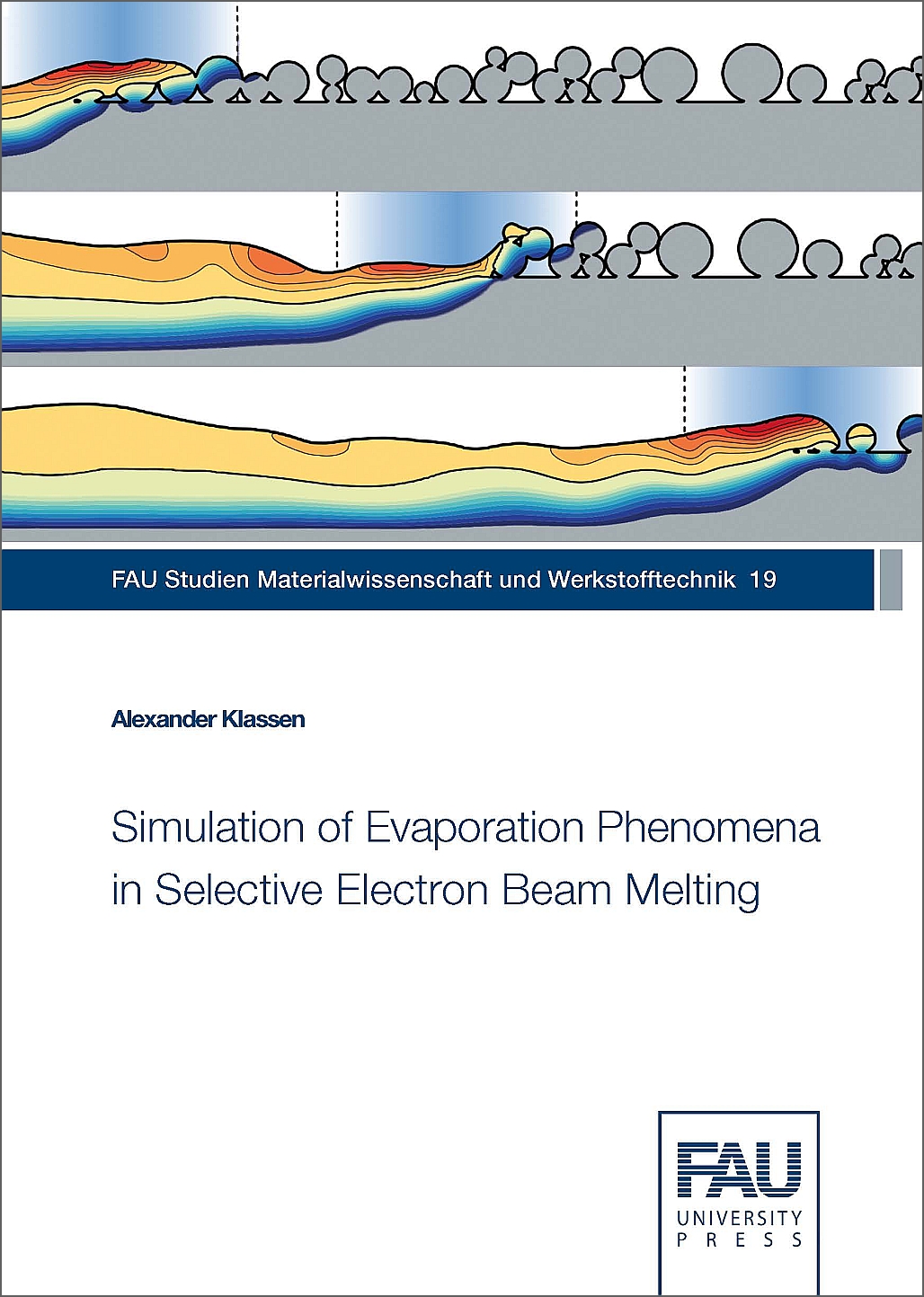Description
Selective electron beam melting (SEBM) is a promising additive manufacturing process in which metal powder is melted by a focused electron beam. Industrial application of SEBM is still hindered by a number of factors, including constraints associated with productivity, product quality and reproducibility. This is partly due to limited understanding of the interactions between various physical effects governing the local heating and fusion of powder particles.
In this thesis, the SEBM process is investigated by means of numerical simulations using the lattice Boltzmann method. The solver can handle hydrodynamics, thermodynamics and the transition between solid and liquid phases and is able to reproduce consolidation behaviour of a powder bed composed of individual particles. The main focus of this work is on modelling electron beam absorption and multi-component evaporation, where the latter includes the evaporation of alloying elements. Model predictions are tested and confirmed by experiments performed in an EBM machine on pure aluminium, pure titanium and the titanium alloys Ti‐6Al‐4V and Ti‐48Al‐2Cr‐2Nb. The validation experiments range from single scan tracks in compact material to simple parts built by melting multiple layers of pre-deposited powder.
The numerical model is used to investigate the impact of various process parameters on the change in alloy composition and on the level of porosity by the example of bulk components produced from Ti‐48Al‐2Cr‐2Nb powder. The influence of an imperfect, random powder bed on the spatial distribution of alloying elements in the manufactured product is also demonstrated.


Reviews
There are no reviews yet.